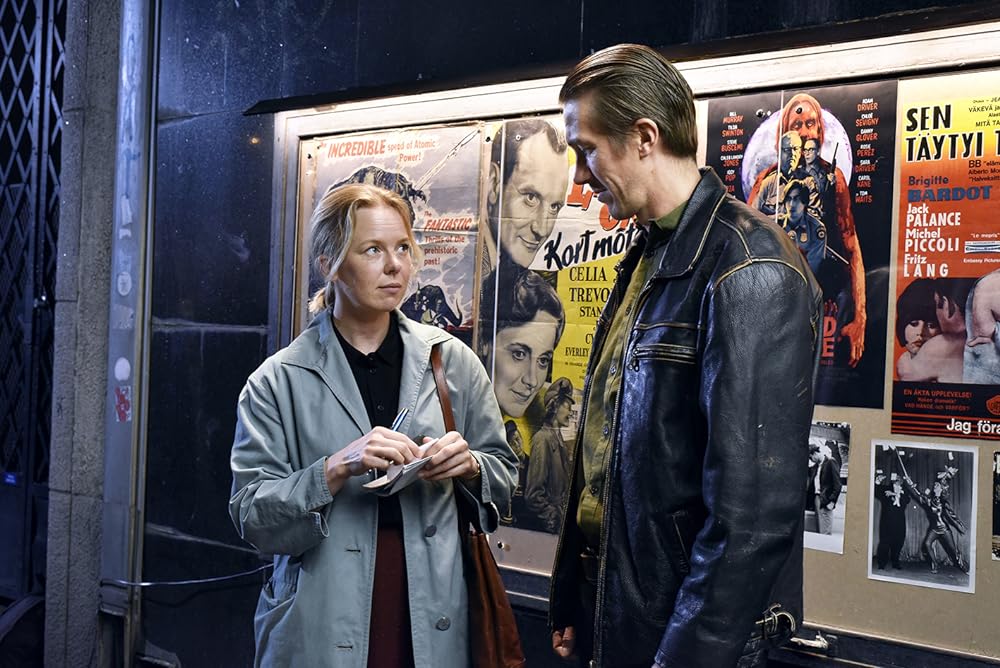Kuolleet lehdet (2023)
“… Fallen leaves are collected with a shovel
Memories and sorrows are also like that.
And the northern wind takes them away
To the cold night of oblivion.” …
Named after Jacques Prévert’s poem “Les Feuilles mortes,” “Kuolleet lehdet” (Fallen Leaves) is the latest film by Aki Kaurismäki, made after a 6-year hiatus. Although he said he wouldn’t make films anymore after the screening of “The Other Side of Hope” at the Berlinale, this comeback seems to have delighted all his fans!
The camera zooms in from the processed food aisle to the cashier, focusing on dozens of packets of meat; another Kaurismaki film meets the audience by disturbing them. A bleak cinematography, a city dominated by gray and depression blue, a supermarket, a construction site. It’s not easy to immerse yourself into the world of the film at first.
Kaurismäki’s known preference for highlighting the ‘others’ that nobody wants to see; this time, the film’s main characters are Ansa and Holappa, who belong to the working class instead of refugees; two depressives trying to survive rather than live. These two characters, who don’t talk much, are observed more through their body language and actions, yet we understand. Kaurismäki’s sprinkled humor elements, the random connections and interactions he establishes, are enough to create an intimate atmosphere along with the characters. This is a film that never falls into agitation or heavy melancholy, it makes the audience laugh while making them sad, and makes them feel uplifted while being touched.
The perception of dark spaces dominated by low colors suddenly becomes colorful with the small but sweet touches in the characters’ lives. While the characters, who do not have much expectation from the overwhelming reality of capitalism, try to hold onto life, love will bring them the “red.” The small positive accidents that break the terrible monotony of life will provide the characters with the motivation to cling to life.
In the decaying city, places can only be as colorful as daisies trying to emerge from concrete, such as Ansa’s house, the bar, and the karaoke. The moments when the characters come close to holding onto life by just breathing warm the hearts of the audience. How many karaoke bars do you think you can hear Schubert sung in? Probably only in Kaurismäki’s bar.
It’s also possible to say that the film plays with the perception of time; it’s not very clear whether it’s because of their poverty or the film’s concept of time that the characters have phones that may have been left over from 20 years ago, and they go to the internet cafe to use computers. On the other hand, when the audience hears news about the Russia-Ukraine war from two radios that seem outdated or retro in today’s terms, they realize they are in the present day; everything else remains timeless.
Now, let’s talk about the tribute sequences to cinema – references to Godard, Bresson, Jarmusch… The small, local cinema where characters constantly return as the place where their fate changes, where they feel hope. Kaurismäki’s message is clear.
With its minimalist cinematography, bleak humor, and deep human emotions, “Kuolleet lehdet” becomes one of the films not to be missed this year. The film has won 4 awards and received 7 nominations, including the Jury Prize at Cannes and Fipresci at the San Sebastian FF.
Where I watched it: Film Festival Gent
by Nil Birinci


